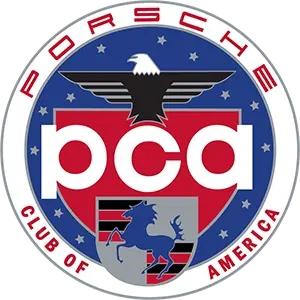Radiator Fans: Are You Boarding Porsche Airlines?
In this hot summer weather, have you been hearing a jet engine sound from the front of your watercooled Porsche?
Does the sound continue even after you have shut the engine off?
If so, you may have a failed radiator fan. Due to how low Porsche’s are to the ground, and with their massively open bumper intake ducts, it is not uncommon to have a fair amount of road debris like leaves, twigs, even sizable rocks, in these ducts. What happens once enough of this debris piles up, is that the debris blocks the fresh airflow to your front radiators (most watercooled Porsche’s have 3 radiators up front; a center, a left, and a right). This in turn can cause the engine’s coolant temperature to overheat, causing the radiator fans to work much harder, often fatiguing their motors sooner than later. Once one of your side (left or right) radiator fans fail, then the engine management computer module sees that the coolant temperature is increasing beyond its engineered parameters, so the opposite side radiator fan increases to a much faster speed to try to overcompensate and cool the engine temp down; this is the jet engine sound you may hear from the front of your Porsche.

One way to prevent this from happening is to make sure you’re having your Porsche maintained on a regular interval (every 12-20k depending on model year), as one of the items on Porsche’s inspection list is to clear any blockages from the radiators and air intakes. Without blockages, your Porsche will run cooler and more efficiently, and in general be a jollier Porsche.
Happy Porsche motoring!
As always, let us know if you have any specific questions, and/or a topic suggestion for a future technical blog submission.
Jeremy Williams is the Oregon PCA Technical editor. He co-owns Matrix Integrated Inc. (Matrix Integrated Inc.) with his brother Justin. Jeremy can be reached at [email protected]







I’ve been wondering about my radiators recently. Not because of any noise but because I’ve seen the leaves come out of there when I wash my car.
I’ve heard of some people adding mesh to the intakes to stop leaves before they hit the radiators. Is there any reason you would advise against that?
I’m glad you’re paying attention to that Matthew as there may be more debris trapped back there. It’d be worth a further look so that you don’t run into any issues down the road.
There are some aftermarket companies who offer mesh/wire inserts for the bumper cover, which help block any larger debris from getting trapped at the radiators. I haven’t seen any issues with them regarding airflow to the radiators.
Jeremy,
Thanks for this post. Looking at the larger picture of the cooling system (air-cooled owners can go to sleep now), I’m told that the coolant is largely of a ‘lifetime’ duration and doesn’t need maintenance or replacement.
While I know that today’s coolants are much better than 50 yeas ago as far as corrosion protection. Is there any benefit to a ‘flush’ and should I do that in my ‘lifetime’ (19 years and counting) with the car.
You’re very welcome Randy. Correct, the vehicle manufacturers state the coolant (as well as many other fluids including transmission) are considered “lifetime.” Unfortunately “lifetime” does not necessarily mean the lifetime of the actual vehicle. For example, if your Porsche were to last 600,000miles, Porsche isn’t recommending that you never change the engine coolant during the 600k. Our shop recommendation is to change the coolant via a coolant exchange(old for new) every ~4years. New Porsche coolant is bright pink(Porsche did use a green-green, not a lime green, in the past), so if you see a brown coolant color in your clear coolant reservoir bottle(also called the expansion tank), the coolant mix smells fishy, and/or the coolant protection level(tested by a tester tool which you can pick up at an auto parts store) is in general above ~0degF, you’re probably overdue for a coolant exchange (the brown color is created by the new pink coolant gathering contaminants and also breaking down in its composition over time. If you have a darker green color coolant, that might be because someone had added the lime green aftermarket coolant to the factory pink coolant. While we’re on this topic, the old wives tale of different coolants coagulating has been proven false, although we still only recommend using factory pink coolant solely).
You are correct about coolant’s being much better engineered than 50yrs ago in regards to corrosion protection. Do not forget about the other properties engine coolant provides as well; anti-freeze and anti-boil. From our ORPCA Fluids tech day information a few years back; “The most common formulation of coolant uses ethylene glycol as a base with anti-corrosion additives mixed in. The ethylene glycol part of the formula provides crucial anti-freezing characteristics and the additives deliver the anti-rust/anti-corrosion capabilities. When the coolant concentrate is properly mixed with water using a 50/50 ratio, the coolant and water provide excellent anti-freeze, anti-boil and anti-corrosive properties. Note that the water is the main media which transfers the heat away from engine components, not the coolant concentrate.
My assumption would be that over the 19year ownership of your Porsche, you may have had a water(eg coolant) pump leak or fail? If so, then during that repair much of the coolant would have dumped out and the shop would fill with new coolant. Or possibly beyond that, the repair shop may have exchanged/flushed the rest of the old coolant out at that time and filled with new. As you might already know, you do not want air bubbles/pockets in your cooling system, which can especially be difficult to prevent on a ’99+ Porsche sports car with the engine/coolant bottle in the rear, 3 radiators up front, and a long run of coolant tubes in between(underneath the car). Our technicians use an apparatus which sucks the cooling system into a vacuum and then they fill the system with the 50/50 coolant/water mix from there, minimizing/eliminating any air bubbles/pockets in the system. Then they run the engine up to full operating temp, followed by 2 separate heat cycle (engine up to temp, then cool completely. Up to temp, cool completely) test drives. Then a final check of the coolant bottle level and final top off if needed.
Feel free to reply with any other comments or questions–they’re always welcome here!